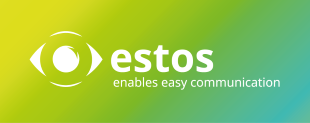Was ist Unified Communicaton und was bedeutet es für Ihr Unternehmen? Weitere Informationen finden sie hier

Die Remote Office Funktion erlaubt Ihnen, außerhalb der Firma Anrufe über Ihr geschäftliches Telefon zu initiieren. Dem gerufenen Teilnehmer wird dabei Ihre Firmenrufnummer (One Number) präsentiert, unabhängig davon wo Sie sich aufhalten. So können Sie beispielsweise auch von ihrem privaten Handy einen geschäftlichen Anruf tätigen, wenn Sie unterwegs sind und dennoch wichtige Informationen kommunizieren möchten. Außerdem bekommen Sie die Telefongespräche auf Ihre Remote Office Telefonnummer weitergeleitet.
Bei aktiviertem Remote Office ändert sich das Verhalten wie folgt:
- Alle Anrufe werden an das Remote Office Telefon weitergeleitet
- Wenn Sie eine Rufnummer über den UCClient wählen, klingelt zunächst Ihr Remote Office Telefon (z.B. Mobiltelefon, das Telefon zuhause)
- Nach Gesprächsannahme werden Sie mit der gewählten Rufnummer verbunden. Ihr Gesprächspartner sieht dabei nur die Firmennummer (One Number)
Profitieren Sie davon, dass bei Anrufen über Remote Office Ihre Smartphone Rufnummer verborgen bleibt und Verbindungskosten fallen an der TK-Anlage des Unternehmens an.
Bleiben Sie mobil und führen Sie wichtige internationale Telefongespräche kostengünstig über das Festnetz. Das Smartphone baut selbst keine Verbindung zur Festnetzrufnummer auf, sodass Mitarbeiter auch dann ihre persönlichen Smartphones problemlos einsetzten können, wenn sie keine Flatrate für Telefonie aus dem Festnetz haben, da keine Gesprächskosten entstehen.

Die Berechtigung zu diesem Gespräch ins Ausland oder über Mobil muss auf der TK-Anlage vorhanden und eingerichtet sein. Die Nebenstelle im Unternehmen muss die Funktion "ins Freisprechen gehen" überstützen.
Abhängig von der TK-Anlage werden die Teilnehmer über ein blindes Vermitteln oder eine Rückfrage, die sofort vermittelt, realisiert. Wird ein Kontakt innerhalb des Unternehmens über Remote Office gerufen, so sieht der Kontakt die Remote Office Telefonnummer anstatt der Nebenstelle. Das Telefonjournal enthält keine Informationen zum Anruf.
Die Nebenstelle ist frei, d.h. auch die Leitung und der Teilnehmer sind frei. Es gibt keinen speziellen Präsenzstatus.
Beim Start der Wahl über ProCall Mobile an Ihrem Mobiltelefon wird über den Datenkanal zum UCServer ein Wahl-Befehl gesendet. Der UCServer weist die TK-Anlage an, die eingetragene Remote Office Telefonnummer, in diesem Beispiel das Mobiltelefon, von der Nebenstelle anzurufen.
Sobald der Anruf an der eingestellten Remote Office Telefonnummer (Mobiltelefon) angenommen wurde, wird die TK-Anlage durch den UCServer angewiesen, die Zielrufnummer von der Nebenstelle aus anzurufen.
Wurde die Wahl initiiert, vermittelt der UCServer das Remote Office Telefon (Mobiltelefon) mit der gestarteten Verbindung zur Zielrufnummer. Die Nebenstelle ist nun wieder frei und Sie hören am Remote Office Telefon den Verbindungston.
Hinweis: Ab diesem Zeitpunkt können Sie die bestehende Telefonverbindung nicht mehr im UCClient steuern, daher stehen Ihnen keine CTI Funktionen mehr zur Verfügung. Am Mobiltelefon können Sie jedoch weiterhin die von Ihrem Mobilfunkanbieter bereitgestellten GSM Gesprächsfunktionen nutzen.

Hinweis: Bei einem Anruf sehen Sie die Telefonnummer der Nebenstelle, da die Telefonnummer des Anrufers am Remote Office Telefon nicht angezeigt wird.
Wird eine Nebenstelle im Unternehmen angerufen, so leitet die TK-Anlage diesen Anruf, der ursprünglich an die Nebenstelle gerichtet war an die Remote Office Telefonnummer weiter. Die Nebenstelle ist nun wieder frei.
Die Berechtigung zu dem eingehenden Gespräch (aus dem Ausland, via Mobil) muss auf der TK-Anlage eingerichtet und vorhanden sein. Das Telefonjournal enthält keine Informationen zu diesem Anruf. Da die Nebenstelle frei ist und damit auch die Leitung und der Teilnehmer werden keine speziellen Präsenz-Informationen angegeben.
Die Remote Office Funktion wird in den Leistungseinstellungen im UCServer ein- und ausgeschaltet. Steht die Funktion nicht zur Auswahl, so wird sie von der eingesetzten TK-Anlage nicht unterstützt.
Die Funktion Remote Office versucht das One Number Konzept über TAPI zu emulieren, wenn es über die Telefonanlage nicht direkt unterstützt wird. Die Anlage muss zur Verwendung von Remote Office allerdings die rechts genannten TAPI Funktionen unterstützen.
Nur wenn diese Bedingungen erfüllt werden, kann die Funktion Remote Office fehlerfrei in Betrieb genommen werden.
- Native Remote Office Unterstützung via TAPI (z. B. Broadsoft) oder über TAPI emuliert
- Setzbare Rufumleitungen auf der Telefonanlage
- Initiierung einer Wahl ohne Benutzerinteraktion (direkte Wahl über Freisprechen)
- Vermittlung eines Gesprächs über "Rückfrage im klingelnden Zustand vermitteln" oder "Direkte Weiterleitung über blinde Vermittlung"
Überprüfen Sie bei Unsicherheiten die Kompatibilität Ihrer Telefonanlage.
